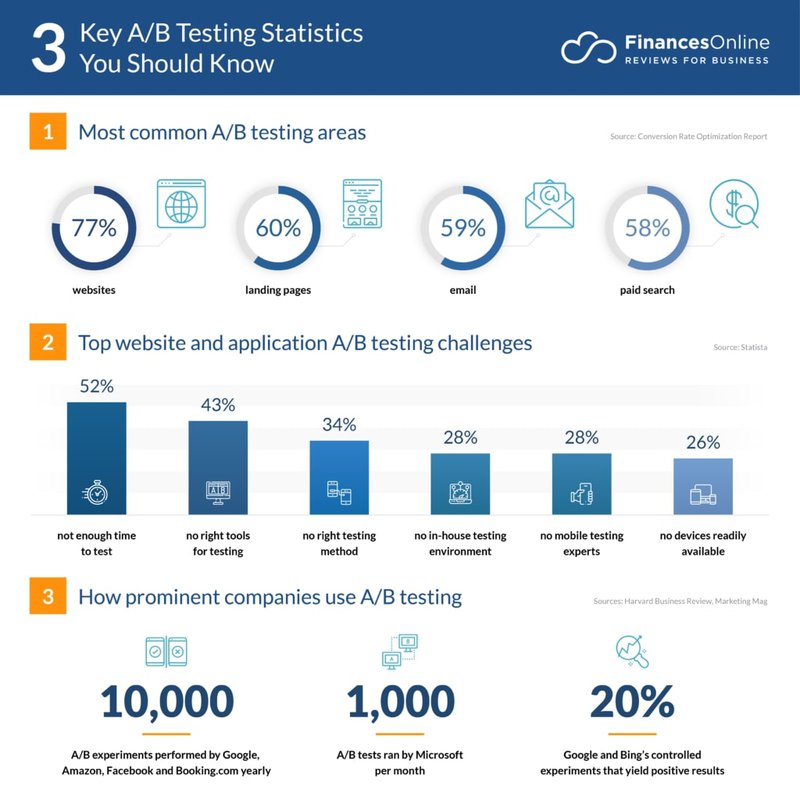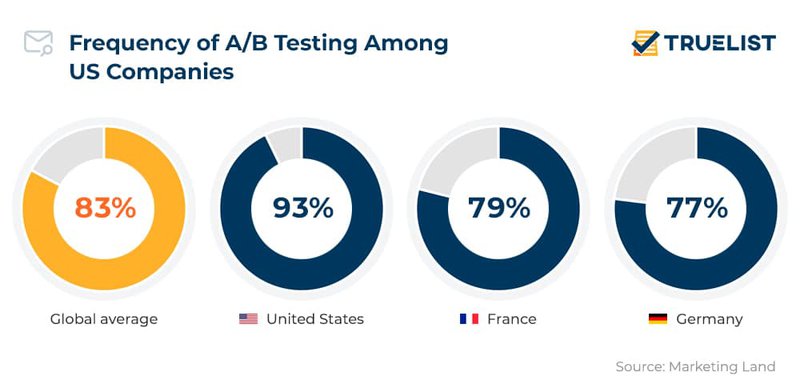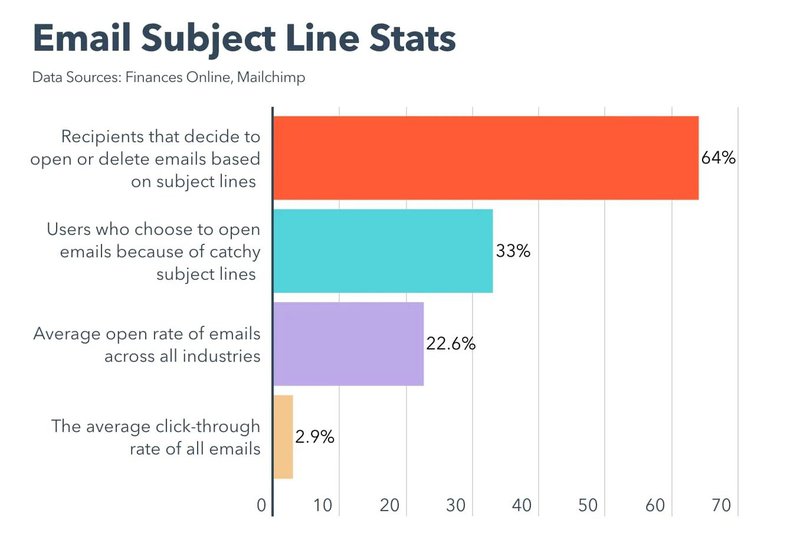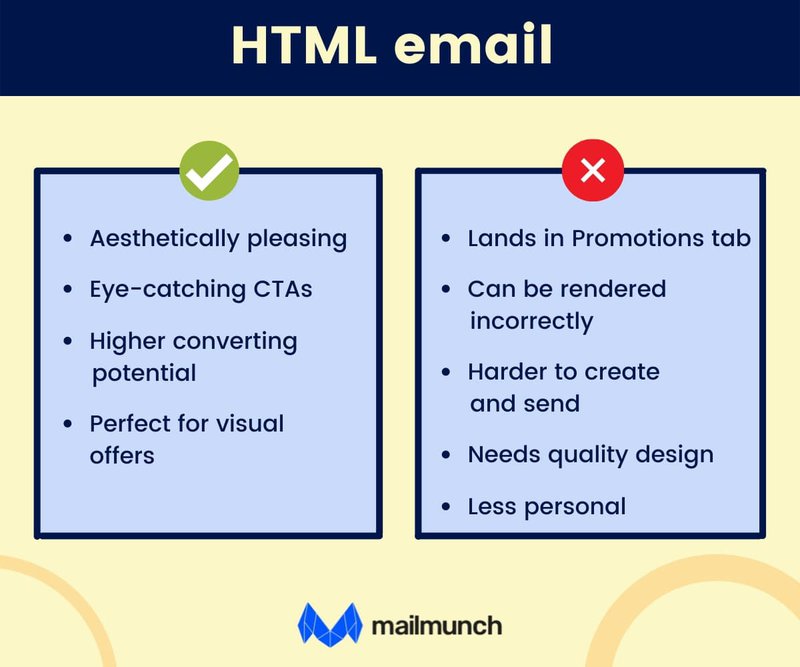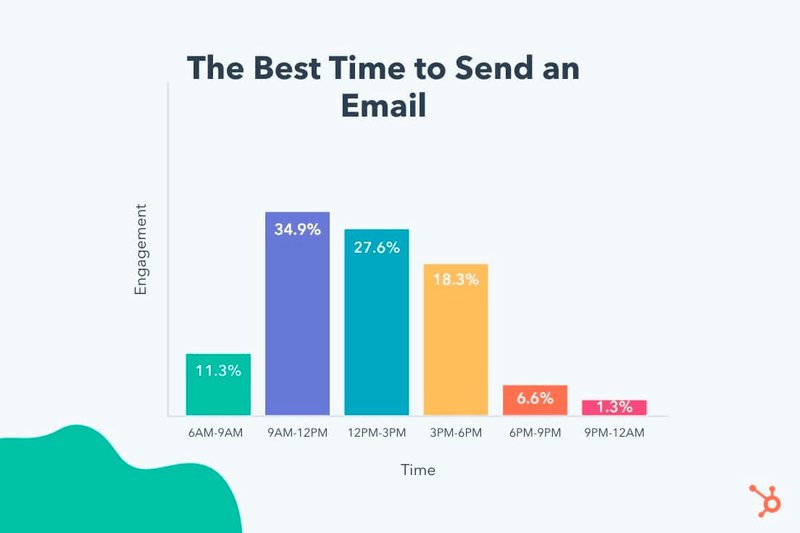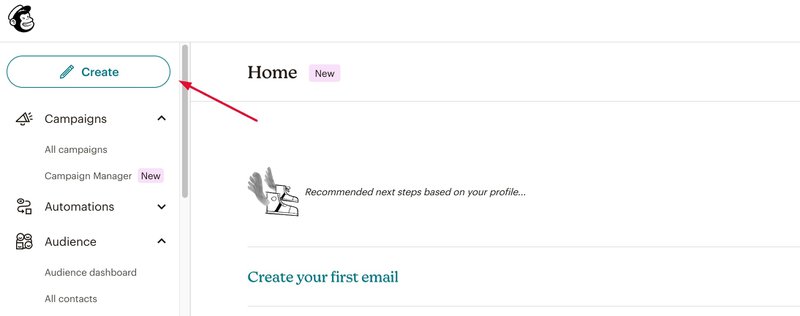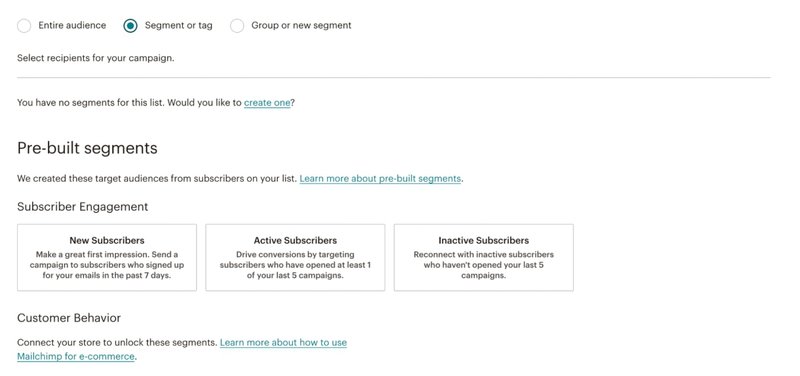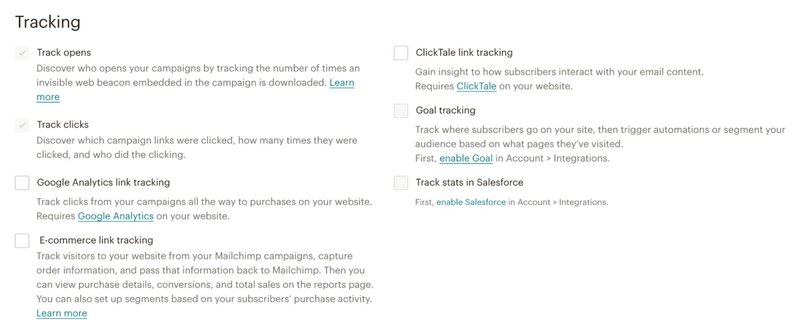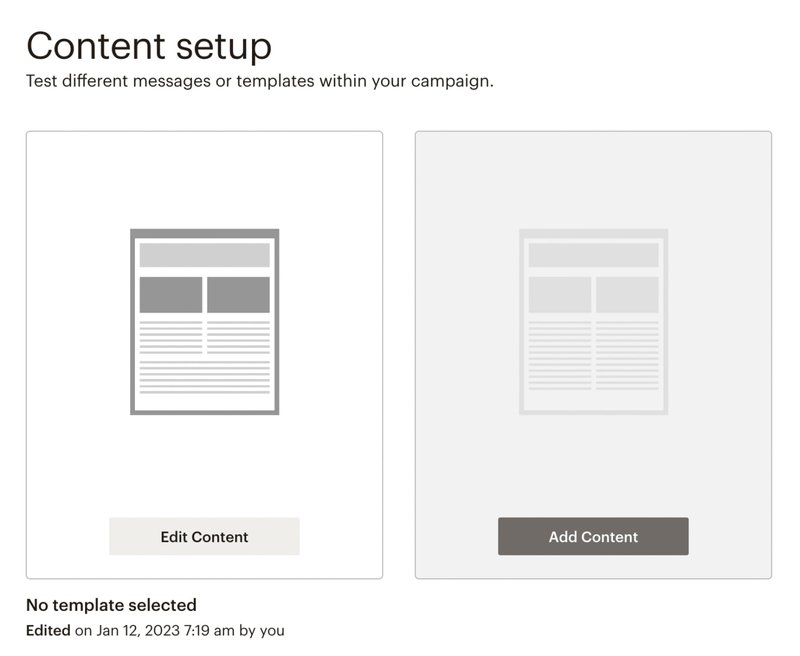20 Mailchimp A/B Test Ideas to Drive Better Email Marketing Results
Mailchimps A/B testing lets you build your email marketing choices based on data. Check out these top 6 tips for a bullet-proof A/B testing strategy.
Updated November 5, 2024
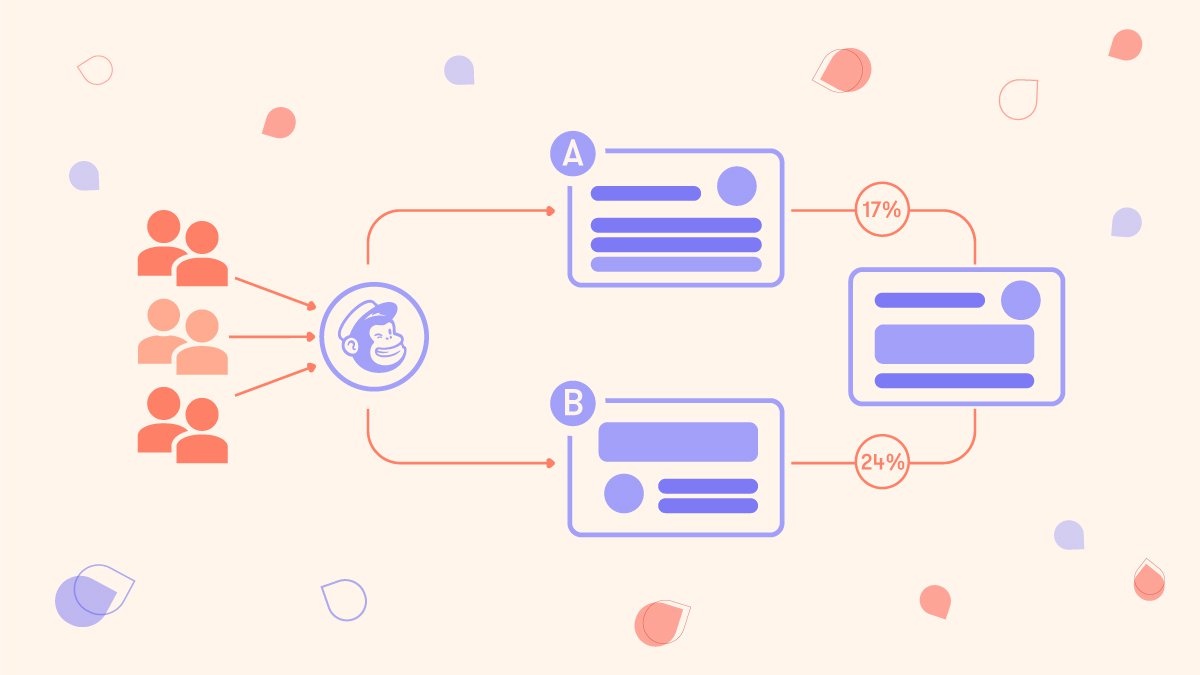
Imagine you're in the board room. Your manager's telling you your marketing emails should be more formal, meanwhile, your copywriter argues your target audience needs something more casual.
You can, of course, debate endlessly.
Or you can run an A/B test – also known as a split test or multivariate test. Email split testing allows you to assess your email marketing hypotheses and get data-driven, valuable insights from your actual audience.
The great news? Most email marketing tools allow you to A/B test your campaigns, and Mailchimp makes no exception. They also make it extremely easy to set up, run, and analyze the results of an A/B testing email marketing campaign.
So, how do you run A/B testing campaigns on Mailchimp, and make sure they actually inform your email marketing efforts?
Keep reading and find out more.
A/B testing definitions you should know
A/B testing is like a science experiment. There may be no hazmat suits or safety goggles, but you wouldn't walk blindly into a science experiment without knowing what you're working with. The same applies to multivariate testing.
Knowing the basic ingredients of successful A/B testing will help you make sure your experiments are conducted in a way that's organized and methodical.
So let’s take a look at the components of A/B testing that you should be familiar with:
- Variable: In A/B testing, a variable refers to the specific element or aspect of your email that you intend to test. This could range from something as fundamental as the email subject line to more nuanced elements like the color scheme or call-to-action placement.
- Combination: When you run A/B tests, you create distinct combinations of variables. These are different iterations of your email, each incorporating alterations to the variables you're testing.
- Test phase: This term denotes the period during which your subscribers are exposed to the various combinations of your email. Getting to this phase is pivotal for collecting relevant data and insights to determine which combination yields the most desirable outcomes.
- Winning combination: After the test phase, the winning combination emerges as the triumphant iteration. The combination surpasses the others in terms of predefined criteria that signify engagement and success.
Understanding how Mailchimp A/B tests work
Now that you've been introduced to the foundational terminology, let's dive into the inner workings of Mailchimp's A/B testing feature:
Planning the A/B test
Before you set up an A/B test, make sure you define your objective for it. What specific aspect of your email are you seeking to optimize? Whether it's the email subject line, sender name, content, or even the ideal time to send your emails – articulate your goal and build a hypothesis. Doing this will help you pick your Mailchimp A/B split test options correctly.
Selecting your winning criteria
Mailchimp allows you to choose from two main types of winning criteria:
- Automatic, which is represented by open rates, click rates, and total revenue (which is related to your conversion rate). If you choose one of these winning criteria, Mailchimp's algorithm will scrutinize the data it collects from your email engagements and show you the winning combination at the end of the testing period.
- Manual, where you determine the most effective combination, based on the insights provided by the Mailchimp analytics.
Exploring variables you can test in Mailchimp
There are four variables you can choose from in Mailchimp:
- The subject line enables you to test things like different phrasing, words, styles, or tones of voice to see what drives more attention in crowded inboxes.
- The "From" name allows you to see if your recipients are more responsive to emails coming from a person's name, your company name, or your team.
- The content is your place to experiment. You can use this variable to test content changes, different email templates, different call-to-action buttons, header images, visual elements, links, and so on.
- The send time, which enables you to see what is the best time to send email campaigns to your recipients. Keep in mind that this option tests specific days and times of day. Make sure to send your combinations to all your recipients at the same time, because your winning combination cannot be sent at a time in the past. Use the data to see when you can send or schedule future campaigns.
Pro tip: You can also contact Mayple and get set up with one of our vetted email marketing agencies with experience in your industry to do all the A/B testing for you!
20 Mailchimp A/B test ideas to drive better email marketing results
Done right, A/B testing can significantly improve your email marketing strategy. However, you must always experiment with combinations that can drive real impact for your business and help you reach your conversion rate goals.
Here are some A/B testing ideas you could try:
Subject line tests
- Emotion vs. curiosity: Test a subject line that evokes an emotional response against one that piques curiosity.
- Short vs. long: Compare a short, concise subject line with a longer, more descriptive one.
- Personalization vs. generic: Asses a personalized subject line that includes the recipient's name against a more generic subject line.
- Urgency vs. FOMO: Compare subject lines with a sense of urgency against those that create a fear of missing out (FOMO).
- Direct vs. indirect: Experiment with a straightforward subject line against a more indirect, intriguing one.
Content tests
- Different email layouts: Compare different layouts for your email content to see which of them appeals more to your audience.
- Storytelling vs. bullet points: Test a storytelling approach in the email content versus a concise list of bullet points.
- Image-heavy vs. text-heavy: Compare an email with a visually rich email design and images against one that relies more on text.
- Educational vs. promotional: Experiment with an email that provides valuable educational content against one that is more promotional in nature.
- CTA button colors: Test different CTA button colors to see if they drive different results, and which option seems more enticing for your audience.
"From" name tests
- Personal vs. brand: Test sending emails from a specific individual's name (e.g., CEO) against sending emails from the brand name.
- Casual vs. formal: Compare a casual-sounding "From" name against a more formal one.
- Specific vs. generic: Experiment with a "From" name that clearly identifies a department or team against a more generic sender name.
- Individual vs. group: Compare sending emails from an individual's name against sending emails from a group or team name.
- Associative vs. official: Test using a "From" name that associates with a recent event or topic against using an official company name.
Send time tests
- Morning vs. afternoon: Compare sending emails in the morning against sending them in the afternoon.
- Weekday vs. weekend: Test sending emails on weekdays versus sending them on weekends (especially important for Mailchimp newsletters).
- Start of week vs. end of week: Compare sending emails early in the week (Monday/Tuesday) against sending them later in the week (Thursday/Friday).
- Time zone optimization: Test sending emails at optimized times for different time zones to cater to a broader audience.
- Consistent vs. varied times: Compare sending emails consistently at the same time each day against varying the send times.
How to run A/B tests in Mailchimp
Here's a quick step-by-step guide on how to create your A/B testing campaigns in Mailchimp.
1. Create an email campaign and choose A/B test from the left-hand menu.
2. Name your campaign, making sure you have a naming convention in order so you can trace back your experiments, campaigns, and changes.
3. Choose your audience. You can send your A/B campaign to your entire contact list or just one contact segment.
4. Choose your winning criteria: click-through rate, open rate, total revenue, or manual.
5. Move to the setup step and create your campaign as you would with a regular one. If you chose "From" name or subject line testing as your variables, this is where you will add your combinations.
6. Choose what you want to track. Mailchimp allows you to choose from:
- Opens
- Clicks
- Google Analytics links
- ClickTale links
- Goal tracking
- Salesforce stats
7. Add your campaign content. If you chose content as your variable, this is where you will add your versions.
8. Confirm the details and send the A/B test campaign.
6 best practices for effective A/B testing
As you embark on your journey of strategic email optimization, remember these indispensable best practices:
Start from a hypothesis
Prioritize formulating a clear hypothesis that you aim to validate through your A/B testing efforts. Skipping this step might seem easier, but it's like leaving home without an actual place to go to; fun, but aimless.
Test ongoing, recurrent emails
You could feel tempted to run your test on a one-off promotional email, like a Mother's Day campaign or your April Fool's one, but doing this will not yield relevant results. Instead, run split tests on recurrent campaigns, like your welcome email, as this will provide insights you can apply in the long run.
Test low-effort, high-impact variables
Direct your testing efforts towards variables that demand minimal effort to change while wielding the potential for substantial impact that helps you reach your conversion goals. For instance, changing a call to action button's color takes three seconds, but it can actually influence your audience's decision to buy.
Only test one variable
To glean accurate insights, restrict your tests to a single variable at a time, ensuring unambiguous attribution of outcomes. Testing multiple variables at the same time will lead to inconclusive results because you won't know what, specifically, drove a change.
Exercise patience with analysis
Allow sufficient time for your subscribers to engage with the variations before drawing conclusive interpretations from the data. Generally, email marketing specialists recommend you wait about a week before you close the test, as this will allow you to collect enough data to make it statistically relevant.
Ensure the relevance of your audience
Audience size can also be extremely relevant for your A/B test results. Email marketers recommend you only start building A/B tests once your email list is at least 5,000 people, because this is the minimum size that can deliver statistically relevant data. However, you can run multivariate tests on a smaller audience too, provided you take the results with a pinch of salt.
Your best source of insight: your contact list
They say "Never build a house on rented land," and that applies to digital marketing too. Social media, SEO, and ads can help you drive traffic and attention. But they're finicky, as they are all manipulated by algorithms you can't control.
A website and a contact list, however, are forever. Once you get your audience's opt-in, no algorithm can send you to the bottom of their inbox. You can control how you get their attention, when, and for what specific purpose, with Mailchimp's CRM features.
A/B testing helps you find the right recipe for your business, audience, and the different goals your campaigns have. More so, it can inform your overarching marketing strategy, help you fine-tune your message, and deliver products and services more in tune with what your customers actually want.
Need help to make sure your A/B testing and email marketing
- Build the right kind of customer experiences and customer loyalty,
- Drive valuable insights,
- And nudge your customers to take actual action?
Contact us and hire a vetted email marketing consultant with experience in your industry to help you in just a matter of days. Get the ball rolling on your A/B testing today!

